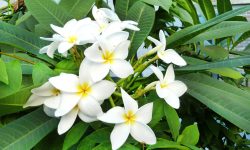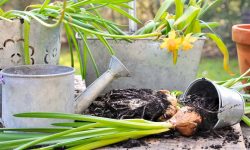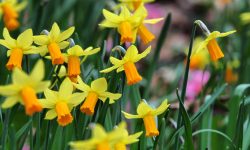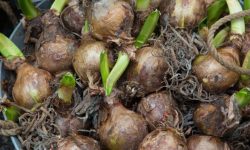Growing hostas from seed may seem like a daunting task, especially for beginners who are more familiar with buying mature plants or dividing established clumps. However, with patience, the right techniques, and an understanding of the plant’s lifecycle, nurturing hostas from seed can become a highly rewarding gardening experience. Hostas are widely admired for their lush foliage, impressive hardiness, and their ability to brighten up shaded areas in any landscape. While vegetative propagation is common, starting hostas from seed offers an exciting way to experiment with new varieties and witness the full development process.
Most gardeners begin with mature hostas because they are reliable and predictable in size, shape, and color. Seeds, on the other hand, offer genetic variability, which can result in a wide array of foliage patterns, textures, and even flower colors. This makes seed-growing particularly appealing to hobbyists or those seeking to create unique hybrids. Understanding how hosta seeds form, when to harvest them, and how to properly germinate and care for young seedlings is essential to achieving success from the earliest stages of cultivation.
Whether you’re aiming to grow hostas for your own shaded garden or interested in hybridizing new varieties, this complete beginner’s guide will walk you through everything you need to know. From collecting seeds to transplanting seedlings outdoors, every step plays a crucial role in helping your hostas thrive.
Understanding Hosta Seeds and Genetic Variability

Before beginning the process, it’s important to understand what to expect when growing hostas from seed. Most hostas are hybrids, and as a result, their seeds do not usually produce identical offspring to the parent plant. This means that even if you collect seeds from a variegated hosta, the resulting seedlings may have plain green leaves or different variegation patterns altogether. Some seedlings may even show surprising and attractive traits not seen in the parent plant.
Hosta seeds are produced in elongated seed pods that form after the plant flowers in mid to late summer. These pods contain several black, papery seeds that are typically ready for harvest once the pods turn brown and begin to split open. The quality of the seeds can vary depending on the health of the plant and the conditions in which it was grown, so choosing healthy parent plants and ensuring proper pollination will increase your chances of successful germination.
Not all hostas produce viable seeds, especially some of the more complex hybrids. If you’re buying seeds from a supplier, look for information about germination rates and parentage. For gardeners who want to control the traits of their future plants, hand pollination and seed collection from known cultivars can be part of the process.
Harvesting and Storing Hosta Seeds for Germination
Timing is crucial when harvesting hosta seeds. The pods typically mature in early autumn and should be left on the plant until they dry and begin to open naturally. Removing them too early can result in immature seeds that lack the necessary energy to germinate. Once the pods have dried, they can be gently broken open to reveal the dark, winged seeds inside. These seeds should be collected by hand and allowed to air-dry on a paper towel or coffee filter for a few days in a cool, dry place.
After drying, seeds can be stored in a paper envelope or small airtight container. It’s essential to keep them in a cool environment, such as a refrigerator, to maintain viability. Labeling each batch with the collection date and parent plant is useful, especially if you’re experimenting with different varieties. Seeds generally remain viable for up to a year, but fresher seeds tend to have higher germination success rates.
While refrigeration is not strictly necessary, it mimics the natural cold stratification process hosta seeds would experience outdoors over winter. This can help stimulate germination when it comes time to sow them. Some gardeners choose to stratify the seeds for a few weeks before planting to increase their chances of sprouting.
Preparing the Growing Medium and Seed Containers
When it comes time to plant, preparing the right soil and containers is key to giving hosta seeds a strong start. The growing medium should be fine-textured, well-draining, and sterile to prevent fungal issues. A mix of peat moss, perlite, and vermiculite provides the ideal environment for seed germination. Avoid heavy garden soil or mixes that retain too much moisture, as soggy conditions can lead to seed rot or damping-off disease in seedlings.
Small trays, seedling flats, or shallow pots are ideal containers for germination. These should have proper drainage holes and be cleaned or sterilized before use. The containers should be filled nearly to the top with the prepared soil mix, and the surface should be leveled and moistened with water before sowing the seeds.
Hosta seeds do not require deep planting. They should be lightly pressed into the surface of the soil or covered with a very thin layer of fine mix. Since light can aid in the germination process, a shallow planting depth allows the seeds to benefit from indirect sunlight or artificial grow lights.
Creating the Right Environment for Germination
To successfully germinate hosta seeds, consistent moisture, warmth, and light are essential. The ideal temperature range for germination is between 65 and 75°F (18–24°C). This can be achieved using a seedling heat mat, or by placing the containers in a warm, draft-free location indoors. Covering the trays with a clear plastic dome or plastic wrap can help maintain humidity levels, which are critical in the first stages of development.
Lighting is another key component. While direct sunlight may be too intense and dry out the soil, bright indirect light or a grow light setup placed a few inches above the containers will encourage strong seedling growth. The light should be on for at least 12 to 14 hours per day, simulating the natural conditions of spring and summer.
Germination typically occurs within 10 to 21 days, depending on seed viability and environmental conditions. During this period, it’s important to monitor soil moisture closely, ensuring it remains damp but not waterlogged. Using a misting spray bottle to water from the top or bottom-watering the trays can help avoid disturbing the seeds.
Caring for Hosta Seedlings After Germination
Once the seeds sprout, they develop tiny green leaves known as cotyledons. These are soon followed by the first true leaves, which more closely resemble the mature hosta’s foliage. During this stage, careful observation and consistent care will ensure healthy seedling development. The plastic cover can be gradually removed to allow air circulation and reduce the risk of mold or fungal issues.
Seedlings should continue to receive ample light and warm temperatures. If they begin to stretch or grow leggy, this may be a sign that they need more light. At this stage, it’s also possible to begin feeding the seedlings with a diluted liquid fertilizer to encourage strong root and leaf development. Using a half-strength solution applied every few weeks is typically sufficient.
As the seedlings grow and develop multiple leaves, they may begin to crowd each other in their containers. Transplanting them into individual pots gives each plant more space and prevents competition for nutrients. This can be done gently with a small spoon or dibber to avoid damaging the delicate roots.
Hardening Off and Transplanting Outdoors
Young hostas need time to adjust to the harsher conditions of the outdoor environment before they can be planted in the garden. This process, known as hardening off, involves gradually introducing the seedlings to outdoor temperatures, wind, and sunlight over the course of a week or two. Initially, seedlings can be placed outside in a sheltered, shady location for a few hours each day, gradually increasing their exposure.
When the seedlings are several months old and have developed a strong root system, they are ready to be planted in the garden. Hostas prefer rich, well-draining soil and thrive in partial to full shade, depending on the variety. Amending the soil with compost or organic matter improves drainage and fertility. Young hostas should be planted at the same depth as they were growing in their pots and watered thoroughly after transplanting.
Spacing is important when planting hostas, as they can grow quite large over time. Even young plants need room to expand, and planting them too closely can result in overcrowding and increased susceptibility to disease. Watering regularly during the first few weeks will help the plants establish themselves in their new location.
Watching Hostas Mature Over Time
Growing hostas from seed requires patience, as it can take several years for the plants to reach their mature size and full coloration. In their first year, most seedlings remain small and may not display the distinct variegation or foliage characteristics of older hostas. This slow progression is normal and gives gardeners a chance to track and document each plant’s development.
By the second or third year, the hostas begin to take on their permanent form. Some may develop beautiful variegation or striking leaf textures, while others may remain green or exhibit subtler traits. This variability is part of the appeal of seed-grown hostas and can lead to exciting discoveries and the development of unique specimens.
As the plants mature, regular watering, mulching, and seasonal care help ensure their continued health. Removing flower stalks can direct energy into foliage growth, although allowing the plant to flower may result in future seed collection and continued experimentation with propagation.
Benefits and Challenges of Growing Hostas from Seed
There are several advantages to growing hostas from seed. It allows gardeners to produce large numbers of plants at a lower cost, offers the chance to develop new and unique varieties, and provides deeper insight into the plant’s growth cycle. Seed-grown hostas can be especially satisfying to grow because they represent a complete gardening journey—from seed to mature plant.
However, this method also comes with challenges. Germination rates can vary, and not all seeds will produce vigorous or attractive plants. Some may never develop the desired characteristics, and it can be years before the final results are evident. For this reason, growing hostas from seed is best approached with curiosity, a willingness to experiment, and an appreciation for the unpredictability of nature.
Despite the slow growth and variability, many gardeners find the process meditative and inspiring. Watching a hosta emerge from seed and flourish under your care is a deeply rewarding experience, and one that connects you to the rhythms of gardening in a more profound way.
Frequently Asked Questions about Growing Hostas from Seed
How long does it take for hosta seeds to germinate?
Hosta seeds typically germinate within 10 to 21 days under ideal conditions, including consistent moisture, warmth between 65–75°F, and adequate light.
Can I grow variegated hostas from seed?
While it is possible to grow variegated hostas from seed, most seedlings will not retain the parent’s variegation due to genetic variability. Only a small percentage may show similar traits.
When should I plant hosta seeds?
Hosta seeds can be started indoors in late winter to early spring. This allows time for the seedlings to grow strong before being transplanted outdoors after the last frost.
Do hosta seeds need to be stratified?
Cold stratification is not strictly required, but storing seeds in a refrigerator for a few weeks before planting can improve germination rates by simulating natural winter conditions.
How big will hostas grown from seed get?
Seed-grown hostas can vary widely in size. Some may remain small while others can grow to mature sizes similar to their parent plants, depending on genetics and growing conditions.
Conclusion
Growing hostas from seed is a rewarding journey that blends patience with discovery. While the process may take time, each stage—from germination to maturity—offers unique insight into the plant’s development. Whether you’re seeking to expand your garden or explore new varieties, starting hostas from seed is a fulfilling way to deepen your connection with nature and cultivate truly one-of-a-kind plants.






